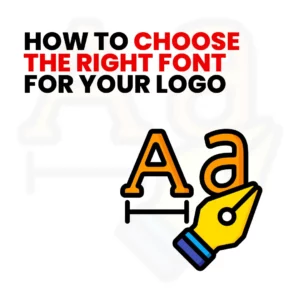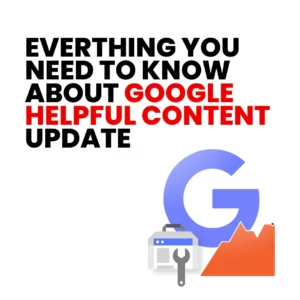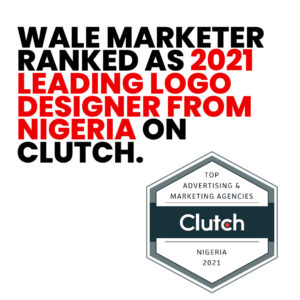With more than 2.9 billion active users, Facebook is an excellent place for ads. As a result, businesses can reach large and specific audiences, which can help raise brand awareness and boost sales. I will show you how to create Facebook ads in 2023 in this article. We will go over everything you need to create Facebook ads in 2023, from setting up a Facebook Ads account to launching a campaign and analyzing performance.
Whatever your experience level with Facebook ads, this article should help you master Facebook ad creation. What the article covers includes;
- how to set up your Facebook page
- how to set up your business manager
- how to create your first campaign
- how to define your budget
- how to optimize your campaigns

Why advertise on Facebook
There are many compelling reasons for companies to consider advertising on Facebook, including the following:
Large number of users: It has been stated that Facebook has more than 2.9 billion active users, making it an excellent platform for communicating with many people.
Targeted advertising: Facebook enables businesses to tailor their advertisements to specific demographics, interests, habits, and other factors, increasing the likelihood that the intended audience will view them.
Results that you can measure: Facebook offers precise analytics on the efficacy of advertisements, enabling businesses to monitor their effectiveness and make choices based on empirical evidence.
Multiple ad types: Facebook provides a range of ad formats, including image advertisements, video ads, carousel ads, and more. This allows companies to select the most suitable format for accomplishing their objectives and reaching their intended audience.
Affordability: The cost of advertising on Facebook is typically lower than the cost of advertising on other platforms, making it more accessible to businesses of all sizes.
Overall, advertising on Facebook can be a highly effective approach for businesses to reach and engage with their target audience, leading to improved brand awareness and higher sales.
Benefits of advertising on Facebook
Options for several use cases
- You can advertise your product or service and send people to your website to purchase.
- You can generate leads – use Facebook adverts to collect names, emails, phone numbers, and more directly from your targeted customers.
- You can also use Facebook ads to distribute content. But, of course, Facebook and Instagram are also the ideal places to distribute the content you create and maximize your reach.
- You can also use it for app installs. You can advertise the app on Facebook and Instagram and generate more downloads.
Perfect sandbox to mass-test your offer
Whether you’re on a budget or have venture capital backing up your business, you can get results in as little as a day. You can validate whether this product works and whether the market even wants your product.
Targeting and Audience Segmentation
Facebook is the ad network with the most information about its users. The platform allows you to micro-segment your target and reach customers. Their machine intelligence finds the type of users most likely to respond to your ads.
What do you need to advertise on Facebook?
Let’s talk about the assets you’ll need to start advertising. To advertise on Facebook, you will need the following:
Business Manager
This is the container that holds all of your business assets. Your business manager houses;
- Ad accounts
- Facebook pages
- Facebook pixels
- Payment methods
Below your business manager, we have ad accounts. You will have one business manager; inside your business manager, you can have five ad accounts. This is where you create all of your campaigns and as I said, you can have multiple ad accounts per business manager.
Facebook page
This is where your ads will run from. If you wish to run a ‘complete’ Facebook ad, you need a page. You can’t create a Facebook ad on desktop without a page. In addition, all ads must be linked to a page. Without a Page, there is no way for reactions (likes, shares, comments) and responses to the ads to be reported to the Advertiser. Also, Facebook ads are meant for ‘businesses’; businesses (including personal brands) need to have pages on Facebook. Therefore, you can’t run ads from your personal profile.
Facebook Pixel (optional)
If you would like to track visitors to your website when you run a traffic campaign, then you need a Facebook pixel. Facebook pixel is a piece of code you put on your website that will track all the visitors’ actions. For example, you can see the pages people visit, their click buttons, if they added a product to the cart, etc.
How to create your Facebook page
To create a Facebook page, follow these steps:
First, log in to your personal Facebook account.

Click on the “ice rack” icon in the top right corner of the homepage, and select “Page” from the dropdown menu.

Select the type of page you want to create in the category section (e.g., local business, brand, public figure, etc.).

Fill out the required information for your page, including the page name, category, and contact details.
Upload a profile picture and cover photo for your page.
Click “Create Page” to finish setting up your page.
You can also visit https://www.facebook.com/pages/ to ‘create new page’ if you are already logged into your Facebook account on this tab.
Once your page is created, you can start publishing posts, interacting with your audience, and running ads from your Facebook Business account. It’s important to regularly update your page with relevant content to engage with your audience and achieve your business goals. Before you run ads, your page has some posts. This way, Facebook sees it as an actual page. I recommend you post at least three times a day for the first seven days, and then you can decrease that frequency to once a day. Make sure you always keep your page active because this will increase your page longevity and relevance score.
How to create your Facebook ad account
Your ad account, as mentioned, is the container that will hold all your ad campaigns. It lives inside your business manager to create your ad account;
1. Visit business.facebook.com and click the dropdown to select the right business.

Click on business settings below the page.

Click on add accounts, click on add and create new.

Name your ad account.
Select your time zone and currency, and ensure that your time zone corresponds to your currency. For instance, Nigerian time zones must use Naira.

Once created, click on “Open in Ads Manager” to add payment options. These next steps determine whether your ad account will be pre-paid or post-paid.
Click on billing and “add funds.” If you want a pre-paid account, choose the “Debit or Credit Card” option to pay with MasterCard, Visa, or other options. However, if you wish for a post-paid account, choose the second option that allows you to pay with your local currency. This option leads you to a payment portal from a provider registered with Facebook (PayU for Nigeria).

How to set up your Facebook ads
To set up Facebook ads, you must have a Facebook Ads account and a Facebook Page. Here is a step-by-step guide on how to set up a Facebook ad campaign:
Step 1: Select Your Objective.
Sign in to Facebook Ads Manager, click the Campaigns tab, and then click Create to start a new ad campaign on Facebook.
Sign in to Facebook Ads Manager, click the Campaigns tab, and then click Create to start a new ad campaign on Facebook. Facebook Ad has 6 simplified campaign objectives in 2023 you can choose from depending on what you want your ad to do.

Here’s how they help businesses reach their goals:
- Awareness: Tell someone new about your brand.
- Traffic: Get people to visit a particular website or app
- Engagement: Reach many people to get more people to engage with your posts or follow your page.
- Leads: Get contact details of people interested in your business.
- App Promotion: Get people to install your app on their phones.
- Sales: Link your Facebook ads to your product catalogue to show people ads for the products they are most likely to want to buy.
Choose a campaign goal based on what you want to achieve with this ad. Remember that you can pay per action for conversion-focused goals (like sales) but per impression for exposure-focused goals (like traffic and views).
For this article, we’ll go with the Traffic objective. Therefore, Facebook would set up the ad sets to cater to the traffic objective.
Step 2: Name Your Campaign
Name your Facebook ad campaign and say if it fits into special categories, like credit or politics.

You can turn on Advantage Campaign Budget+ by going further down the page. It is advisable to use this option if you have more than one ad set.

Click the Next button.
Step 3: Set a Schedule and Budget.
Name your ad set.

Next, you type in how much money you want to spend on your Facebook ad campaign. Finally, you can choose a daily or lifetime budget for life.

Set the start and end dates for your ad if you want the ad to go live right away. You can also schedule your ad to run at a later time.
Setting up a schedule for your paid Facebook ads may be the best use of your money since you can choose only to show your ad when your target audience is most likely to be on Facebook. Note that you can only schedule your ads for hours of the day if you choose the lifetime budget option.

Step 4. Target Your Audience
Scroll down the ad set and start building an audience for your ads.
Start by choosing the place, age, gender, and language of your audience. Then, under location, you can include or exclude cities over a specific size.

You can also prioritize people who’ve recently been interested in the product or service you sell.
As you make your selections, keep an eye on the audience size indicator on the right of the screen, which gives you a sense of your potential ad reach.
You’ll also see an estimated number of daily reach and link clicks. If you have run campaigns before, Facebook will have more information to make these estimates. Always keep in mind that these are estimates, not guarantees.

Remember that effective targeting is the key to getting the best return on ad spend (ROAS).
Use the Detailed Targeting field to include or exclude people based on their demographics, interests, and behaviours. Here, you can get very specific. For example, you could market to people who went to higher learning institutions and exclude people who use Android OS.
Step 5: Choose Where Facebook Should Place Your Ads
You can choose where your ads will show up by scrolling down. If you’re new to advertising on Facebook, Advantage+ Placements is the easiest option.

If you choose this option, Facebook will put your ads on Facebook, Instagram, Messenger, and the Audience Network when they are most likely to work.
Conversely, you may want to choose Manual Placements to instruct Facebook to show your ads on specific platforms.

For instance, it is costlier to use the Instagram App than Facebook in Nigeria. This is because Instagram uses more data to load up images and videos, while some network providers even give access to Facebook for free. Therefore, you can infer that people who use Instagram have more money to spend than Facebook users. With this in mind, you can set your ads to show only on Instagram.
When I use the Advantage+ placement, Facebook shows my ad mostly on ‘Facebook’ (rarely on Instagram). Also, when I set up two ad sets, one for Facebook and the other for Instagram, the Facebook ad set gathered more reach. In one instance, ₦10,000 spent on the two ad sets got me around 70,000 reach on Facebook and 12,000 on Instagram.
This shows that the Facebook audience is cheaper than the Instagram audience in Nigeria.
Likewise, in terms of return on investment (in Nigeria), I found out the Facebook audience needs to be more educated and mainly doesn’t convert (some just fill out forms and send messages for fun). In contrast, the Instagram audience is more premium and likely to convert.

In placements, you can also use the following to narrow down your audience;
- Type of device: phone, computer, or both.
- iOS, Android, feature phones, or all mobile devices and operating systems.
- Only when WiFi is connected: Only when the user’s device is connected to WiFi does the ad appear.
Step 6: Set Up Your Ad
After you click next from the ad set level, the next step is setting up your ads.

First, choose the type of ad you want to create.
Then, add the text and media for your ad.
The formats you can choose from will depend on the campaign goal you chose at the start of this process.
If you’re working with an image, upload it on your Facebook gallery and choose the right crop to fit your placement.

You can also choose to use an existing post on your Facebook page or Instagram account instead of uploading a creative. I personally enjoy using Instagram reels as ad creatives. Hence, I ensure to link my Facebook page to my Instagram account to facilitate this process.
On the right-hand side of the ad setup modal, you should see a preview of your ad in all the placements you chose in the previous step. Once you’re happy with your choices, click the green “Publish” button to start your ad.

My Tips for Successful Facebook Ads
Start With Broad Targeting
You think you know your audience; therefore, you narrow your audience with granular, detailed targetting. More people are likely to be interested in your offer from a broad audience than from your narrow audience. When you narrow down, you lose these people. Best performing audiences across all industries is broad targeting. Broad targetting lets facebook use its algorithm at full steam without limitations and gives them the power to decide which user should see your ad.
Facebook shows you traffic ads to people who are likely to visit your website, your message ads to people who have sent messages to brands in the past, etc. Their machine learning is so powerful and has so much data that this works better than micro-targeting.
I start targeting for new clients with a broad audience. For instance, if my client service people in Nigeria, I start with the cities with over 500 thousand Facebook users. Then as time goes by, say after the first two months, I create a retargeting campaign to show ads to people who have engaged with the business. This includes people who like the ads and visit the Instagram profile or website (this is why Facebook pixel is essential).
Focus On Ad Creatives
This is the only activity, tactic, or hack you could use in your campaign to yield such high returns, as your creatives are great. Of course, you can work with poor targeting, wrong campaign structure, optimization, and bidding strategies. However, having the perfect targeting, flawless campaign structure, impeccable campaign optimization, and highly optimized bidding strategies can only save a campaign with good creatives.
When creating your ad campaigns, creatives are our biggest lever. 80% of your focus should be on developing better creatives and testing more variations. Facebook (and Instagram) runs on content. If you can keep users engaged, your ad will likely do well and get an excellent engagement score.
How to Define Your Budget
Your budget is one of the most critical elements of your ads, and you can set it at an ad set level and a campaign level. Use ad-set-level budgeting for testing new things and a campaign-level budget for prospecting campaigns. Once you have tested something and know an ad set works, it’ll go into a whole production campaign. Then from there, use campaign budget optimization now.
How much should your Facebook ad budget be?
This will broadly vary on a case-by-case basis, but as a general rule, stay within 0.5 x product price. Following this rule, let facebook spend per ad set be at least half the price of your product which would equal two times ROAS. If you get a purchase with this budget now, you need to give Facebook more of a budget to test with if you go below that.
For example, if you sell a ₦50,000 product and only test with ₦1,000 a day. For three days, you only gave Facebook ₦3,000 to get you a ₦50,000 purchase. That would mean a 16.7 return on ad spend if you made a purchase. That is just unrealistic, so when testing, you always have to keep in mind the price of your product and be realistic with it.
Don’t expect to invest a few bucks and get a sale out of it. You have to invest enough to give Facebook enough data to optimize. If you have the budget for it, you should test everything at least one times the price of your product. When it comes to prospecting campaigns, there are no rules for it; it should be set to as high as you can, as long as it is bringing in sales profitably. When optimizing your campaigns, we always have your result in mind, so we know your targeted KPIs, compare them to your campaigns’ current results, and adjust accordingly.
How to Optimize Your Campaigns
The first thing to note here is the length of your customer journey, meaning how long it takes from when a user clicks on your ad to when they buy. For some businesses, it can take seven days; for others, it is almost instant; for some, it can take more than thirty days. So consider this period when evaluating results.
For example, if your ad takes, on average, three days to convert, it doesn’t make sense to evaluate the results from yesterday on your campaigns because you have to give it the entire three days to have complete data.
Another thing is knowing when to turn off ad sets. As we talked about earlier, you have to give enough budget for Facebook to test. Then it is pretty simple after spending the complete testing budget, if it hits the target KPIs you keep running; if it doesn’t, you turn it off. The key here is turning it off fast so you don’t let clear, undeniable losers run for longer than they should. This affects the overall performance of your ad account now, the three elements of roads. The final point is to identify the problems and work to solve them.
ROAS is composed of a function of the CPC, the conversion rate, and the order value. So when evaluating ROAS, remember not to only evaluate it on its own and always have those three other metrics side by side to context why the ROAS is where it is. Then, if it’s not satisfactory, see which one of the three metrics is prejudicing it the most and work on fixing that specific issue.
Hire a Facebook Ad Expert in Nigeria
Setting up a Facebook ad campaign can be an effective way to reach and engage with your target audience on the world’s largest social media platform. Following the steps outlined above, you can create and publish a successful ad campaign that helps you achieve your business goals. However, creating and managing a successful ad campaign can be a complex and time-consuming process, especially for those new to Facebook advertising.
If you want to maximize your ad budget and get the best possible results, consider hiring a Facebook ad expert in Nigeria to help you. I can take all the stress of creating a successful Facebook ad campaign, including; providing valuable insights, guidance, and support to help you get the most out of your ad campaign. So, consider reaching out to me today to take your Facebook advertising to the next level.





